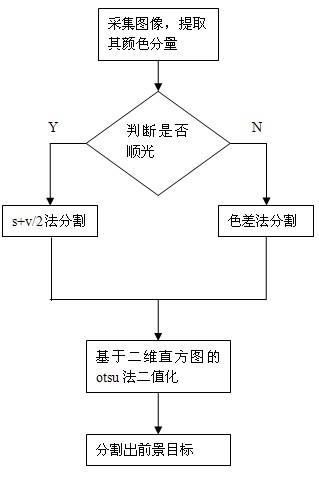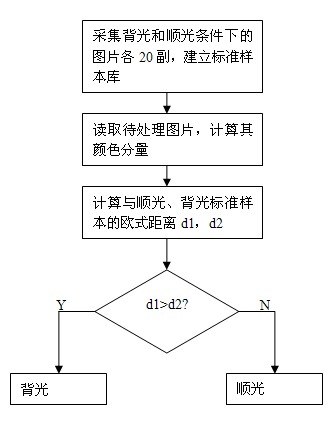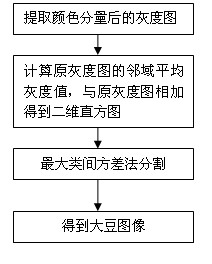Illumination-classification-based adaptive image segmentation method
An image segmentation and adaptive technology, applied in image analysis, image data processing, instruments, etc., can solve the problems of impact analysis and research, segmentation algorithm effect deviation, large amount of calculation, etc., to improve segmentation effect, improve effectiveness, The effect of reducing computational cost
- Summary
- Abstract
- Description
- Claims
- Application Information
AI Technical Summary
Problems solved by technology
Method used
Image
Examples
Embodiment Construction
[0032] Taking soybean image segmentation as an example, the specific implementation will be described in detail in conjunction with the accompanying drawings. The overall flowchart of the algorithm of the present invention is as figure 1 shown. The specific implementation steps are as follows.
[0033] Image color feature extraction
[0034] When shooting soybean images indoors, due to the influence of light and shooting angle, there are often spots or shadows on the surface of soybeans. In order to accurately segment the target, it is necessary to consider the influence of light in different shooting environments. RGB and HSV color spaces are the most representative color models among many color models. R, G, and B represent the red, green, and blue components of the color space, respectively; H, S, and V represent the hue, saturation, and Brightness features. Analyzing the color features of the image, it can be found that these color components will change significant...
PUM
 Login to View More
Login to View More Abstract
Description
Claims
Application Information
 Login to View More
Login to View More - R&D
- Intellectual Property
- Life Sciences
- Materials
- Tech Scout
- Unparalleled Data Quality
- Higher Quality Content
- 60% Fewer Hallucinations
Browse by: Latest US Patents, China's latest patents, Technical Efficacy Thesaurus, Application Domain, Technology Topic, Popular Technical Reports.
© 2025 PatSnap. All rights reserved.Legal|Privacy policy|Modern Slavery Act Transparency Statement|Sitemap|About US| Contact US: help@patsnap.com



